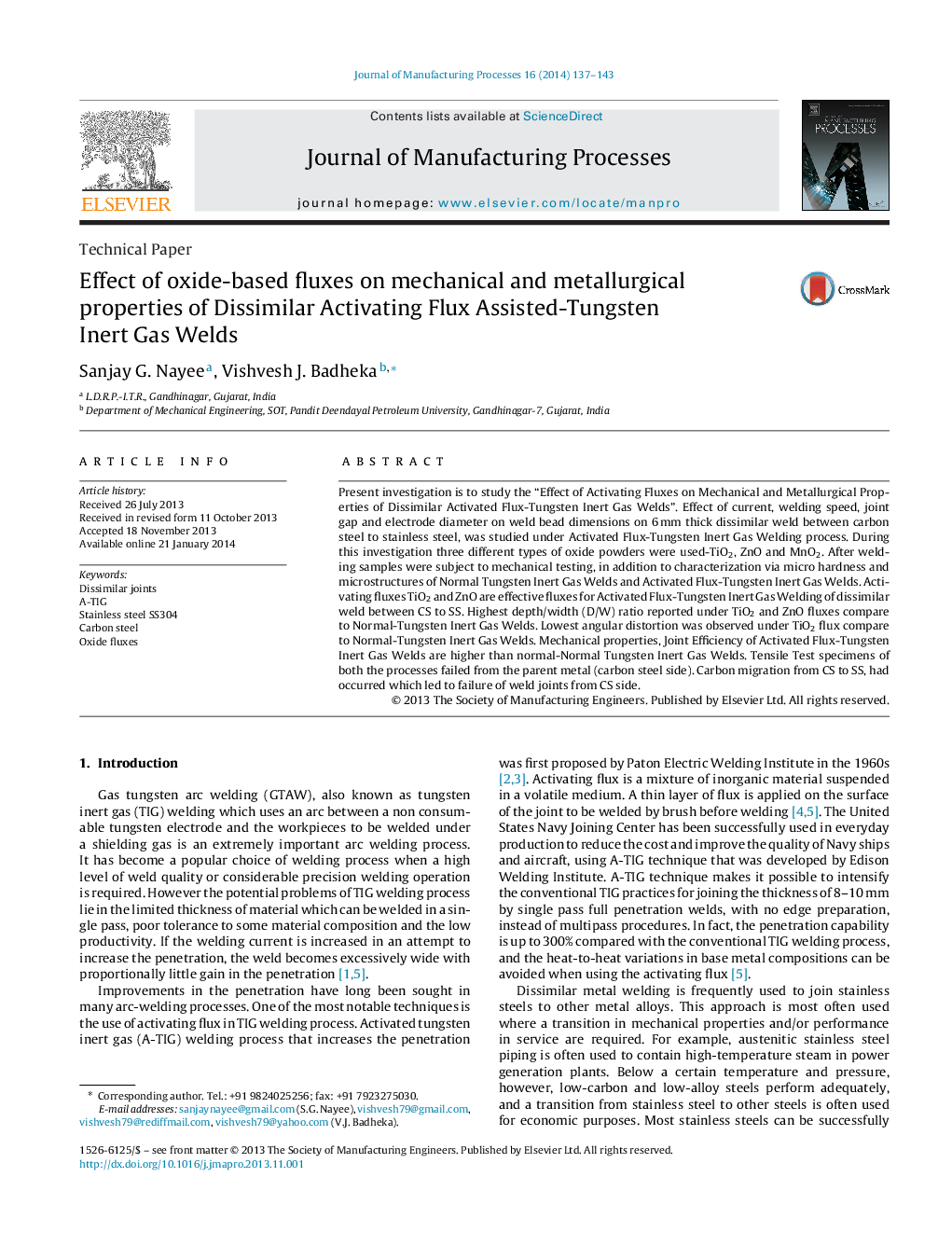| کد مقاله | کد نشریه | سال انتشار | مقاله انگلیسی | نسخه تمام متن |
|---|---|---|---|---|
| 1697056 | 1012032 | 2014 | 7 صفحه PDF | دانلود رایگان |
• This is the first study on application of A-TIG welding on dissimilar weld between carbon steel and 304 SS materials.
• Activating fluxes TiO2 and ZnO are effective fluxes for A-TIG welding of dissimilar weld between CS to SS.
• Mechanical properties, Joint Efficiency of A TIG welds are higher than normal TIG welds.
• Carbon migration from CS to SS, had occurred which led to failure of weld joints from CS side.
Present investigation is to study the “Effect of Activating Fluxes on Mechanical and Metallurgical Properties of Dissimilar Activated Flux-Tungsten Inert Gas Welds”. Effect of current, welding speed, joint gap and electrode diameter on weld bead dimensions on 6 mm thick dissimilar weld between carbon steel to stainless steel, was studied under Activated Flux-Tungsten Inert Gas Welding process. During this investigation three different types of oxide powders were used-TiO2, ZnO and MnO2. After welding samples were subject to mechanical testing, in addition to characterization via micro hardness and microstructures of Normal Tungsten Inert Gas Welds and Activated Flux-Tungsten Inert Gas Welds. Activating fluxes TiO2 and ZnO are effective fluxes for Activated Flux-Tungsten Inert Gas Welding of dissimilar weld between CS to SS. Highest depth/width (D/W) ratio reported under TiO2 and ZnO fluxes compare to Normal-Tungsten Inert Gas Welds. Lowest angular distortion was observed under TiO2 flux compare to Normal-Tungsten Inert Gas Welds. Mechanical properties, Joint Efficiency of Activated Flux-Tungsten Inert Gas Welds are higher than normal-Normal Tungsten Inert Gas Welds. Tensile Test specimens of both the processes failed from the parent metal (carbon steel side). Carbon migration from CS to SS, had occurred which led to failure of weld joints from CS side.
Journal: Journal of Manufacturing Processes - Volume 16, Issue 1, January 2014, Pages 137–143
